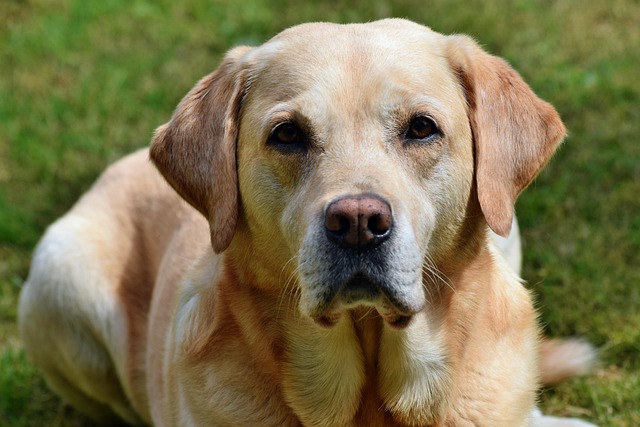
How do i train my dog to be obedient?
Watching your dog dart across the park ignoring your calls isn’t just frustrating—it can put them at risk near busy streets or public spaces.
If you’re a new dog parent in the US—maybe you’re huddled on your Chicago apartment floor with your 1-year-old rescue Pug, Bella, who’s trembling under the blanket every time a fireworks show pops off downtown, or you’ve watched your 6-month-old Lab mix, Max, pace nonstop and whine when you leave for work in Texas—you’ve probably felt that helplessness of wanting to soothe them, but not knowing how. Anxious dogs aren’t being “difficult”; their brains are stuck in “protect mode,” and calming them down means meeting them where they are, not forcing them to “get over it.” Let’s break this down simply, with science, easy steps, and how to stay aligned with local pet rules.
First, let’s keep the science straightforward: When dogs get anxious, their bodies flood with cortisol—the “stress hormone”—which makes their hearts race, their muscles tense, and their brains hyper-focused on threats (even small ones, like a loud garbage truck or a new neighbor’s doorbell). To calm them, you need to lower that cortisol and boost oxytocin—the “bonding hormone”—by making them feel safe and in control. Think of it like calming a nervous friend: You wouldn’t tell them “stop being scared”; you’d give them a quiet space and gentle reassurance. For dogs, this is even more critical—they don’t understand why they’re feeling this way, so your steady presence is their anchor. Take Lisa, a first-time owner in California: Her 2-year-old Shih Tzu, Mochi, would panic during thunderstorms, hiding in the closet and refusing to come out. Lisa learned to set up a “calm corner” with Mochi’s favorite bed and a white noise machine (to drown out thunder). After a few storms, Mochi started going to that corner on her own—she associated it with safety.

Here’s how to put this into action, step by step: Start with a safe space—in apartments (common in NYC or Boston), this could be a crate lined with a soft blanket and a piece of your clothing (your scent calms them) placed away from loud windows or doors. Never drag your dog to this space; let them choose to go there. Next, use gentle distractions to shift their focus: Offer a stuffed Kong toy filled with peanut butter (freeze it first to make it last longer) or play soft classical music (studies show it lowers dog anxiety). When your dog starts to relax—even if it’s just stopping pacing for 5 seconds—reward them with a tiny treat (freeze-dried salmon works great) and a quiet “good girl/boy.” Positive reinforcement is key here: Punishing an anxious dog (yelling, holding them down, or scolding them for shaking) only cranks up their cortisol, making anxiety worse—and it’s against US animal welfare norms, which prioritize kindness over discipline.
Now, let’s tie in rules and community habits that matter. Every US state requires core vaccines (distemper, parvovirus, etc.)—keeping your dog’s shots up to date isn’t just the law (fines for non-compliance can hit $200 in Florida or Illinois); it also keeps them healthy, and a sick dog is more likely to feel anxious. When you take your anxious dog for short walks (stick to quiet routes—avoid busy streets with honking cars), always clean up their poop—cities from Seattle to Miami have fines up to $300 for leaving waste, and it shows respect for your neighbors. In apartments, keep your dog’s calm space quiet: If your neighbor’s TV is loud, turn up your white noise machine instead of letting your dog fixate on the sound. And when passing other dogs or kids on walks, keep your leash loose (a tight leash signals stress to your pup) and give plenty of space—rushing interactions can trigger their anxiety.
Calming an anxious dog takes patience—some days will be better than others, and that’s okay. Every quiet moment you spend with them, every safe space you provide, every gentle reward? It’s teaching them they don’t have to be scared. Before you know it, that trembling pup will be curling up next to you, knowing they’re finally safe.

Watching your dog dart across the park ignoring your calls isn’t just frustrating—it can put them at risk near busy streets or public spaces.

New puppy owners often find themselves rushing to clean up accidents before they set in, and that’s where puppy pad training becomes a game-changer.

If you've noticed your dog's waistline disappearing and your veterinarian has mentioned those few extra pounds, your first instinct might be to simply reduce the amount of food in their bowl.

Training a dog to use a designated spot indoors isn’t as daunting as many new owners fear, but it does take consistency and an understanding of your pet’s needs.

That moment of dread on a walk is all too familiar for many new dog owners. You see another dog approaching down the sidewalk of your neighborhood

If the sight of another dog on your neighborhood walk makes your heart sink as your own dog erupts into a frenzy of barking and lunging, you're not alone.